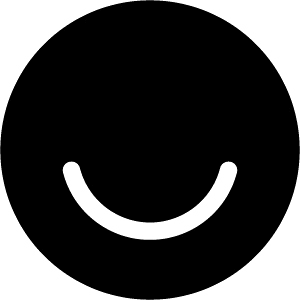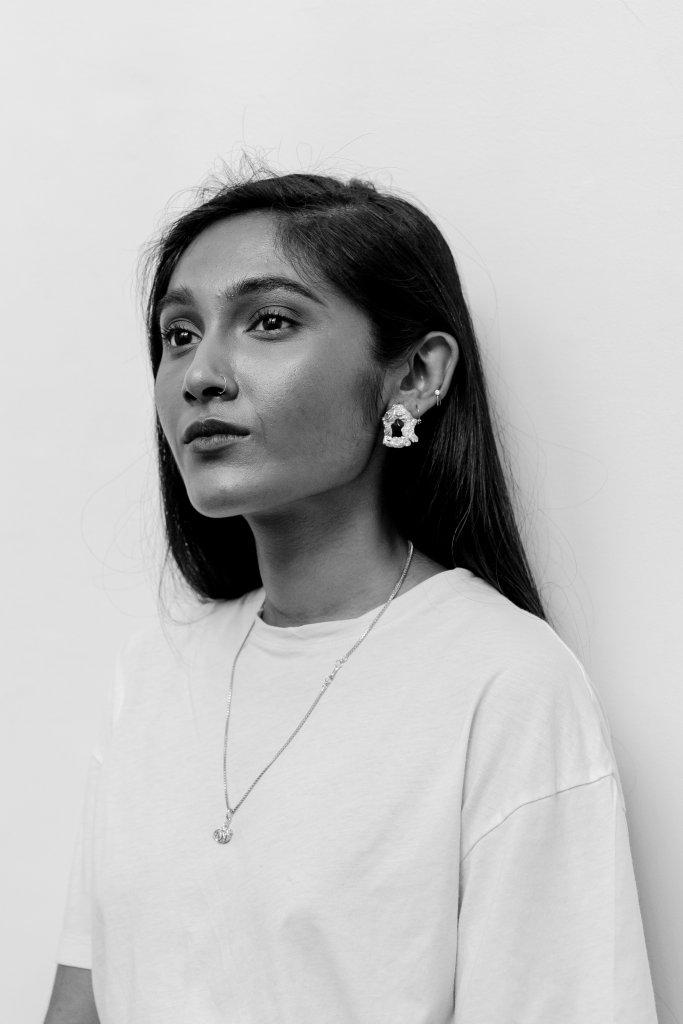There were directors of galleries and biennials that called us cyberbullies, which was really interesting because I think they wouldn’t say that if we were lads, or if we were white, or if we were publishing in print.
Art critic Zarina Muhammad doesn’t mince words and yet, there is a vulnerability in them. What sets her texts apart from most mainstream media art reviews is the honesty you’d expect from a friend recommending a movie or a play. With her, art criticism escapes the realms of clinical dissection-ish discourse to become relatable, humane and within reach.
Along with Gabrielle de la Puente, she runs The White Pube, an online criticism platform where they share reviews and essays around art, and more recently video games and food. Their writing reflects the sentiment Zarina echoes in our conversation – ‘the arts are fucked’. They are appalled by the art world’s elitism and inaccessibility and are ready to take on those who need to change. While the platform started almost as a joke, it has amassed a huge following ever since its inception in 2015. Zarina, now 26, lives with her family in London while Gabrielle resides in Liverpool. Their humble office is Whatsapp, and their website is a reflection of everything they stand for: inclusivity, diversity and a whole lot of honesty. Under The White Pube, they run web residencies, give wholesome and cool emoji reviews, assist with grants for artists of color, and pour their hearts out every week on their website. They describe The White Pube as their collective identity, so much so that sometimes Gabrielle’s fiancé can’t tell who is tweeting.
It is often tricky to navigate the paths of radicality, but Zarina knows the responsibility that comes with the power of an audience. The White Pube, therefore, doesn’t just stop at the reviews – they also boldly point out the problematic patterns of the art world, calling out galleries and artists when needed. Zarina and Gabrielle are also full of ideas on how to fix these issues. On our video call, surrounded by her plants, Zarina talks to me about her process of writing reviews, her thoughts on galleries, why The White Pube makes its financial accounts public, and how it sometimes feels like she is screaming into the void, but will continue to do so.
Could you take me through what it was like growing up in London and what were some of your early creative influences and interactions with art?
My family isn’t the kind of family that goes to museums or galleries very often. But there was this one exhibition at the National Gallery – about Monet, I think – and my parents took me to see it for some reason. According to my dad, I stood in front of a painting of the water lilies and said, ‘I can do better than that’. An early critic (laughs).
I wasn’t a very boisterous kid, so the idea of me saying that just doesn’t make sense with my memory of myself.
How did you end up studying Fine Arts at Central Saint Martins – where you also met Gabrielle and started The White Pube?
I initially ended up doing art kind of by accident, just to piss my parents off I think. They were like, ‘what are you gonna do with this? You might as well do economics’. All of a sudden, for me, art became this thing that you did with your body and it was completely outside the realm of the head. I really loved that. But it did feel unfeasible for me to do an art degree, so I applied for Political Science but decided to wait and do a year-long Art Foundation course at Camberwell.
And then two weeks in, I realised that I loved it and decided not to pursue Political Science. It was a way of thinking about a subject from within it, but outside of it. And I feel like that really grabbed my attention at Camberwell. I eventually got into Central Saint Martins for a BA Fine Arts, which is where I met Gab (Gabrielle de la Puente). We developed this unique relationship as artists that had parallel practices – we both used Tumblr in 2008, and made work that was about or alongside the internet. And it sounds trite now because everyone makes work about the internet, but this is 6-7 years ago, and it felt quite new at the time.
How did The White Pube happen then?
Gab had gone to go see this art exhibition at a gallery 15 minutes away from school. And she said to me, ‘Oh, you should go – it is really good. You’d find this interesting for this reason’. I didn’t really go to exhibitions at the time. I didn’t enjoy being in galleries even though I was an art student. I didn’t really want to do the homework in that sense.
But I took her recommendation and went to go see the show. I had her little review in mind – it was anecdotal and word of mouth, but it felt like a review nonetheless. And then, on the way back, I read the Evening Standard’s double-page art review spread. And serendipitously, there was a review of the same show. Considering I had my own opinions and Gab’s review in my head, Evening Standard’s 200-word review – which pretty much just talked about what was in the room, and gave it three stars – it felt bizarre. It meant nothing. It really infuriated me.
I went back to the studio at the uni, and slammed the newspaper on the table. Gab and I had this whole conversation about what is wrong with art criticism and this way of writing. You have just vacated yourself, so you’re not writing from a human position at all. You’re writing like you don’t inhabit a body. In fact, it’s not really saying anything about what’s in the room.
And we just thought – why don’t we do that? We were 100% joking. Gab rushed to GoDaddy and Wix to get the domain as soon as possible, just in case anyone else had the same idea at that time. We launched it within a week – it was all very quick and impulsive. And I cannot stress enough on the fact that this was a joke.
This reminds me of your childhood story where you just looked at something and said ‘I can do better than that’, and you did. This is an interesting circular connection.
That’s right. I didn’t think about that.
So when did you guys realise that you were on to something bigger?
We started this in the first month of our third year in college. At that time, we were also working on dissertations and degree show work. The White Pube was very much a secondary concern for the most part of that year. We didn’t even tell our tutors that we were doing this. But I think almost immediately, a small circle of women and non-binary people in London started to take notice.
They were this small insular group of outlawed insiders that were already marginalised in some sense. Within the week, people were already tweeting on the lines of ‘This is what London’s always been missing’ and ‘The White Pube can go all the way’. We thought it was the funniest thing, and then Gab had a crit with an artist in London who wanted to speak about TWP. Until then, it didn’t join up in either of our heads that it was related to or could run parallel to our practices. We were writing as we would to each other. We were trained as artists and we were just thinking aloud from that position. That artist told us, ‘You guys write about art like it’s this kind of a bizarre hole in your day, like a bodily encounter that we metabolise and assimilate’.
We didn’t know we did that. Around the same time, Gab reviewed Jesse Darling’s show at Arcadia Missa called ‘The Great Near’. The review ended with the line, ‘This exhibition is like a stomach-settling (sic).’ And then Jesse tweeted: ‘Not facetious or ironic, this might b the harshest most true review bc @thewhitepube channels somatic currents not jus fuxxin w dyscourse.’
And all these things then made sense. We had no idea what we were doing and we didn’t take this seriously. It took external assessment and input to tell us that what we were doing was valuable and meaningful. In fact, it was so valuable that we were very supported by really generous women and non-binary people that had 5 or 6 years more experience than we did in the industry.
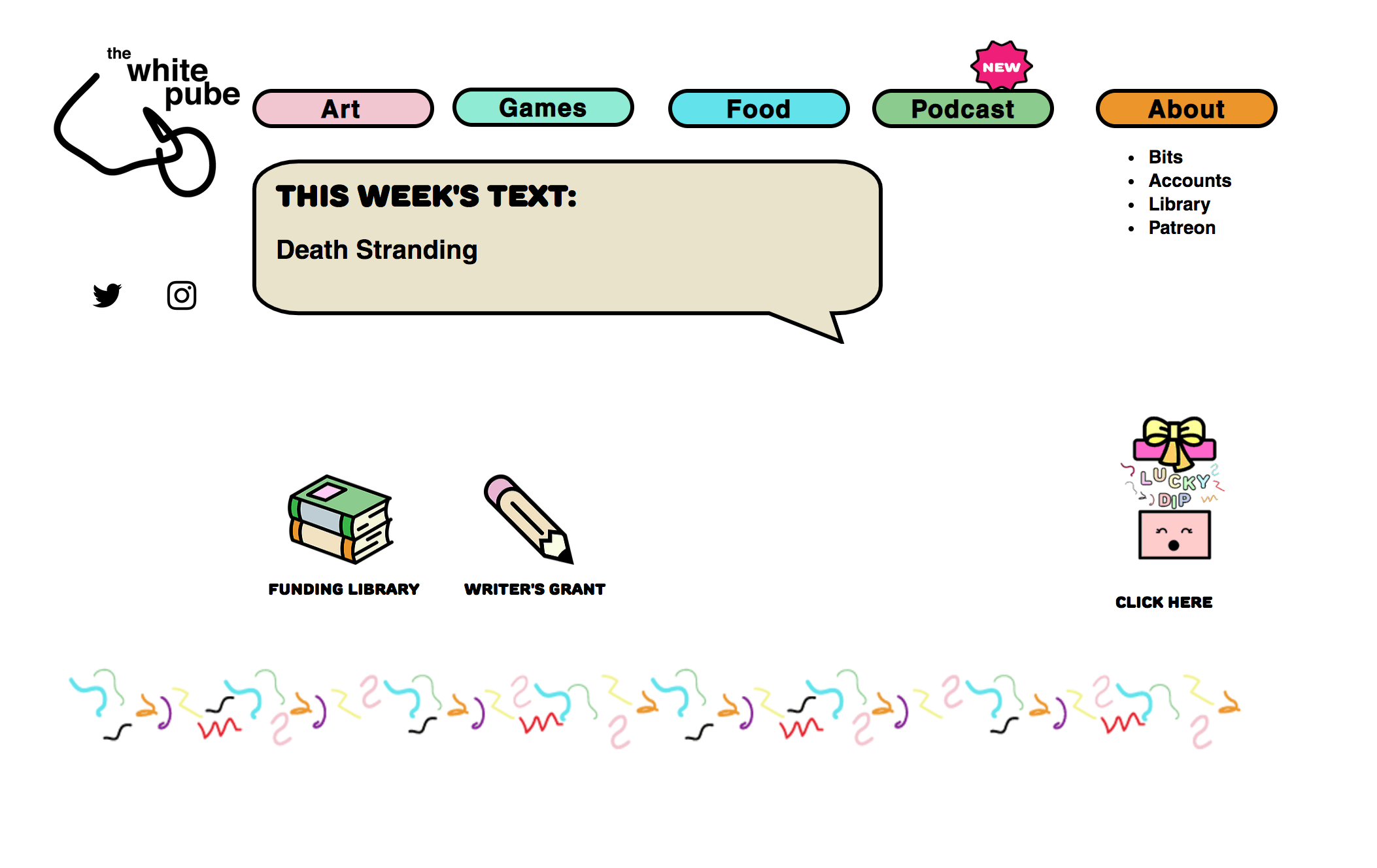
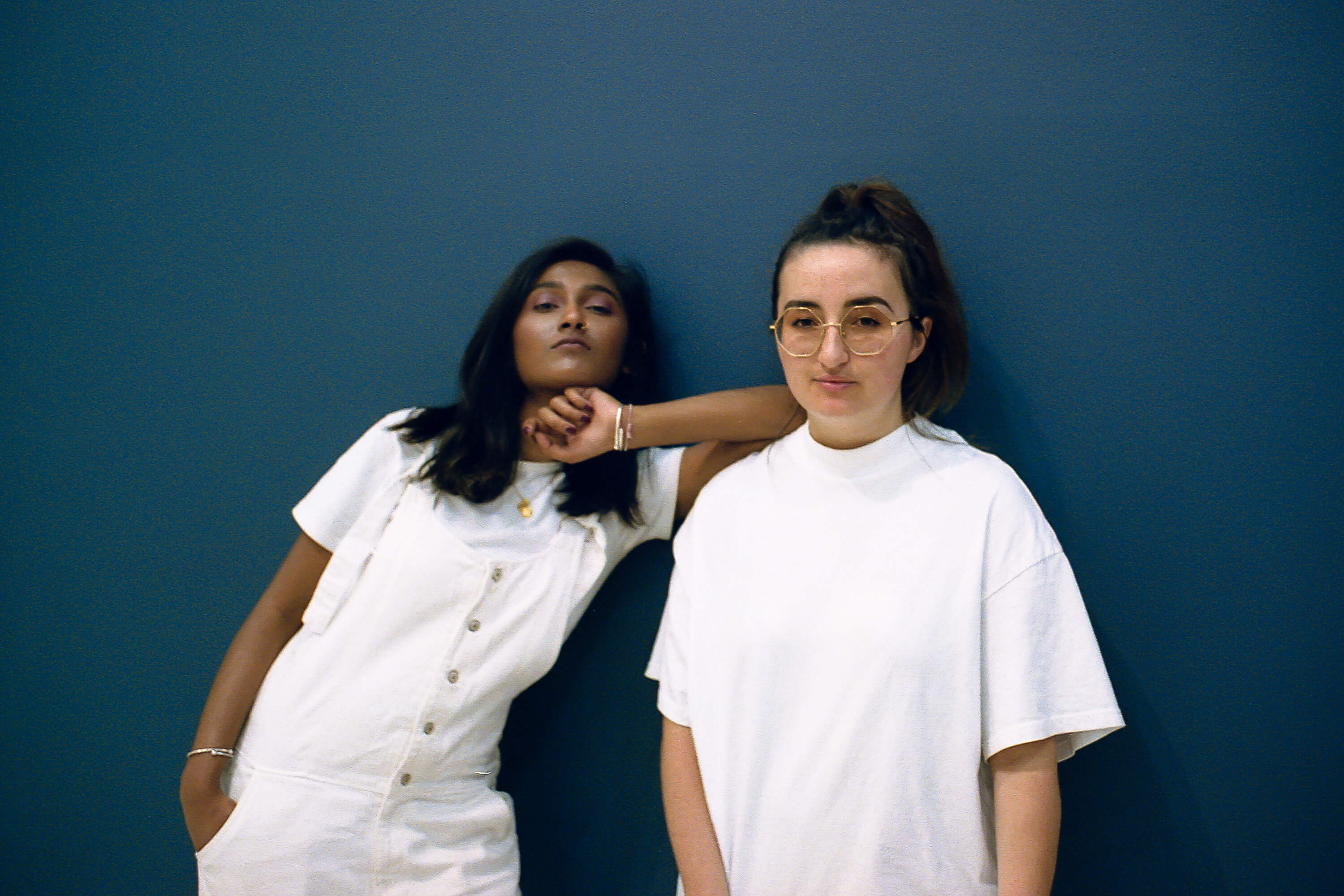
Zarina Muhammad and Gabriella de la Puente
In places like London, it seems fucking impossible to be young or emerging or an early career artist trying to make work and pay rent at the same time. The terms of these institutions in any of these structures are just so tilted towards people who already have enough.
One of the reasons I feel that TWP became a cult success is that your own lives and emotions are very much a part of the reviews and essays which add a layer of intimacy – almost like a text conversation with a friend. How and why did you decide to take that approach? Was that ever a conscious decision? And do you feel there are any negatives to it – for example, a bad day might spoil a review?
All the time. Maybe more so in the reviews from a few years ago. I think it is quite interesting that in a way, the website is kind of a journal of our 20s now. You can read the art criticism as thoughtful, intellectual texts, but in a way, they’re also documents of our relationships and our breakups. Perhaps, it wasn’t the healthiest thing to do and now I’ve got to a new place with my writing where I don’t want to talk about these intimacies in a way that’s not manoeuvred or conditioned for public viewing. I think some of the earlier texts being public makes me kind of uncomfortable but it’s too late now. I can’t take it back. I wish I’d started therapy a bit earlier in my life though.
Moreover, as a woman of colour, people are quite keen to attribute my art criticisms to my construct and I think that also affects the way my work is read. So I have to be quite careful about the way I construct certain things or arguments or the way I phrase things. I have to be able to think about what I’m saying from outside of it, or I have to caveat certain things with it. And I think that becomes a bit harder when you’ve written too much about yourself.
Could you tell us about your creative processes. For example, how do you approach writing an art review – from experiencing the show to finally writing/editing?
Gab’s quite meticulous. She goes through drafts and drafts. She’ll often write something she calls the ‘first splurge’ and then completely reworks on it in another document.
I used to be way more slapdash than I am now – there was a period of a few months where I’d write the piece from start to finish on my phone on the trip back from the gallery. One-shot, with typos and no editing. But I have become more meticulous as well. It has changed since I decided that I did not want to write about white artists anymore. Now, whether I feel oppositional to or confrontational with them and their work, I am already complicit in their agenda, especially as an art critic of color. So, that decision has been a game-changer.
Now I try to see the show in advance and sit with it for a few days. And then I start writing on Tuesdays if it’s my week to write. I really faff around for two days and not write anything of significance. And then on Thursdays, I’ll be like, ‘Fuck. I’m so behind. I’m never gonna finish it in time. It’s gonna be so bad’. And Gab will say that it’s fine. (laughs) Then I sit down and write 600-700 words, and hate them. I take the afternoon that day and I know that it will click at some point on Friday afternoon. So basically, I spend a lot of time between Tuesday and Thursday, just reading or really thinking about how the show makes me feel.
But writing is a torturous process for me. I’m not a natural writer by any means. I write a sentence and go back over that three times and think, ‘This isn’t how I feel’. It takes a lot to squeeze it through all these tubes of my brain even though the reviews are never that long. The challenge is to join the gaps between the thoughts and words and get them into a settled place. It takes a lot of work.
What happens if there’s an instance where you really like the artist and you really like their overall body of work, but are disappointed with this one specific exhibition that you review? Is it more challenging and hard to kind of write about that with just the same amount of transparency and honesty?
What I find more difficult is when I like the artist or the work, but something about the gallery itself and the structure it sits within is off. When it is an artist or an artwork that you like, you want to write about that generously and sincerely. But sometimes the institution just gets in the way, so how do you write about those things at once and separately? It feels like you’re neglecting the good part. And it often feels like you’re taking out the problems of one thing on another. As artists, art workers, and critics, we’ve all got our problems with galleries, and none of us want to be in galleries, but they have the money. So what can you do? Articulating and navigating that space is the difficult bit, at least for me.
What has been the best part about this collaboration for both of you? Have there been any challenges of working together? In the last five years (since you started TWP), how has the relationship evolved?
We work on the basis of friendship and I think that’s why it works. At least that’s what makes the most sense to me at the moment. We’ve had one argument in our entire friendship, and it was about whether you should use conditioner or not.
We rarely disagree. And if we do disagree about an artwork or an exhibition, it’s fine because I know that out of everyone out there doing it, Gab is the person I respect the most. We have fundamental respect and admiration for each other. She’s my favourite writer. She’s so clever and driven, and she gets shit done. I aspire to be that level of solid. In terms of the politics of the art world, we kind of overlap in a really nice way. We’re complicit in each other’s agendas, and we’ve adopted each other’s politics in a way that makes loads of sense.
I just always know that she’s got my back and that’s really nice, especially considering the kind of tangles we get into. If I do doubt myself, she’ll always be there to back me up. I don’t think the website would work with just one of us on our own. It’s always been the two of us together – egging each other on. We’re such enablers for each other. Everything we do is because the other one has said – go and do it.
I read in one of your interviews that when you post on Twitter, it’s hard even for people who know you to guess which one of you posted it.
(Laughs) Yes! Gab’s fiancé sometimes can’t tell who is tweeting.
That level of friendship!
As you have said before, there is a duality in your mission – making art accessible to all while working on inclusivity within the art space. Could you tell us more about this? And have you seen the impact of what you do in any tangible or intangible way?
God, I wish. It feels like I’m just screaming into the void. I only ever get these small little wins.
The paths of change will never be smooth. It’s really fucking hard and I’m so impatient. In the beginning, we found it quite energising – this idea that we were democratising art criticism, or making our work more accessible for people who had never really gone to galleries or thought of themselves as an art audience. But the current situation with the government – the Arts Council just giving out money to corporate arts entities that have shareholders and are funded by venture capitalists. Their emergency funding is not going to the organisations that really need it or to the artists themselves. They’re being hung out to dry. The arts are fucked right now. And the institutions that are big enough to provide gainful employment for artists are all sweeping redundancies and moving to zero-hour contracts to have a more precarious workforce that they can pay less at the end of the day with less labour rights, and destroy the power of the unions that exist.
In places like London, it seems fucking impossible to be young or emerging or an early career artist trying to make work and pay rent at the same time. The terms of these institutions in any of these structures are just so tilted towards people who already have enough.
Despite the current protests around Black Lives Matter, some of these institutions that are racist and anti-black have no intention of changing that. So how do you exist within that structure as an artist of colour? How do you convince the larger public that specific artworks are worth their time and are of value if the institution doesn’t really accept you as a person in your entirety? It feels like the entire system is rigged – the art world has a very specific type that is institutionally acceptable. It’s always been the middle and upper classes that have thrived and dictated the terms of engagement and construction, and the systems at play have always been governed by a privileged elite.
Life goes on and life is more important, and people are more important. And fundamentally, that is what art should speak to you. And if it doesn’t, then that’s quite funny. It’s fine. You’re not gonna hurt feelings. It’s a painting. I think it’s a fundamental point that we’ll always agree on.
Which is why taking the agency back for people of colour has also been a very important part of TWP’s mission. What do you think needs to change for that to happen?
I think it boils down to the same 5 or 6 interconnected problems.
You can’t cut class out of racial politics. For instance, as a middle-class Asian, I experience racism at a distance compared to working-class black artists who feel it much more keenly. Understanding this intersectionality is a good place to start. And, disrupting that imbalance within this dynamic is of key importance. And by that, I mean actually working towards the material benefit of those who feel the force of racism more bluntly. Additionally, refusing to work in the institution’s favour and refusing to use that proximity to power to advance as an individual, and instead using it to leverage material change for the collective good is so important as well.
A universal living wage and proper arts funding – if artists are able to make a living from doing this in any way, that would be great. Like, if you could work at the Tate, not on zero-hours or contract invigilating, and be able to pay your rent and still have money leftover. Not living paycheck to paycheck would make the lives of artists of colour better. Many people also rely on wages outside of their practice to get by. They teach, invigilate galleries, work in bookshops. But the Tate have also made half of their commercial workforce redundant.
In terms of the structure of galleries, all too often, your ability to rise within the ranks of a gallery is vertical. And you only really seem to be allowed authority and power if you speak in agreement with the gallery’s own terms. I also think that the diversity policy within the art sector has a lot to answer for. We’re not allowed to talk about the ways in which that racial politic is often a violence inflicted by the institution itself. It’s spoken about as an abstract and not like, maybe the Tate should be paying reparations for the fact that the majority of the money that they started with was made from the slave trade. They will acknowledge it and will put out a public statement. But are you going to literally pay reparations? No, no, no.
They are not going to put a brown person in charge of the Tate, and while there are brown or black curators and heads of departments, the Tate is still not changing. It doesn’t matter who is on the board. It’s about the way you work. Like the fact that the Arts Council doesn’t fund cooperatives. You can’t have a horizontal equitable structure and be funded by the national funding body. That’s crazy to me!
This is absolutely true, and the discourse is an extremely important one. And the White Pube is radically changing that. Have you ever faced criticism from one of these “White Cube” kind of galleries for the work you do? If yes, what has your response or reaction been?
In the beginning, the criticism was that we were not politically specific, and hence, it’s not good art criticism. But we knew it wasn’t true. We have been politically specific to the point of obtuseness!
When we got more followers and readers, all of a sudden, the fact that we said what we thought if we didn’t like something became a little bit of a sticking point. There were directors of galleries and biennials that called us cyberbullies, which was really interesting because I think they wouldn’t say that if we were lads, or if we were white, or if we were publishing in print. And all of those things didn’t really work in our favour to get that directorial class onboard which is fine. I’m not here to be read by directors. That’s not who I’m writing for.
We can write what we want, but we’re just writing into the void if no one’s listening. A part of me wishes that curators at a certain managerial or institutional level would, though. They could probably learn a lot from the stuff that we are writing. But I think institutions work in a very specific way. When it comes to criticism of an exhibition, it’s just non-engagement with the critical thoughts and the disagreement.
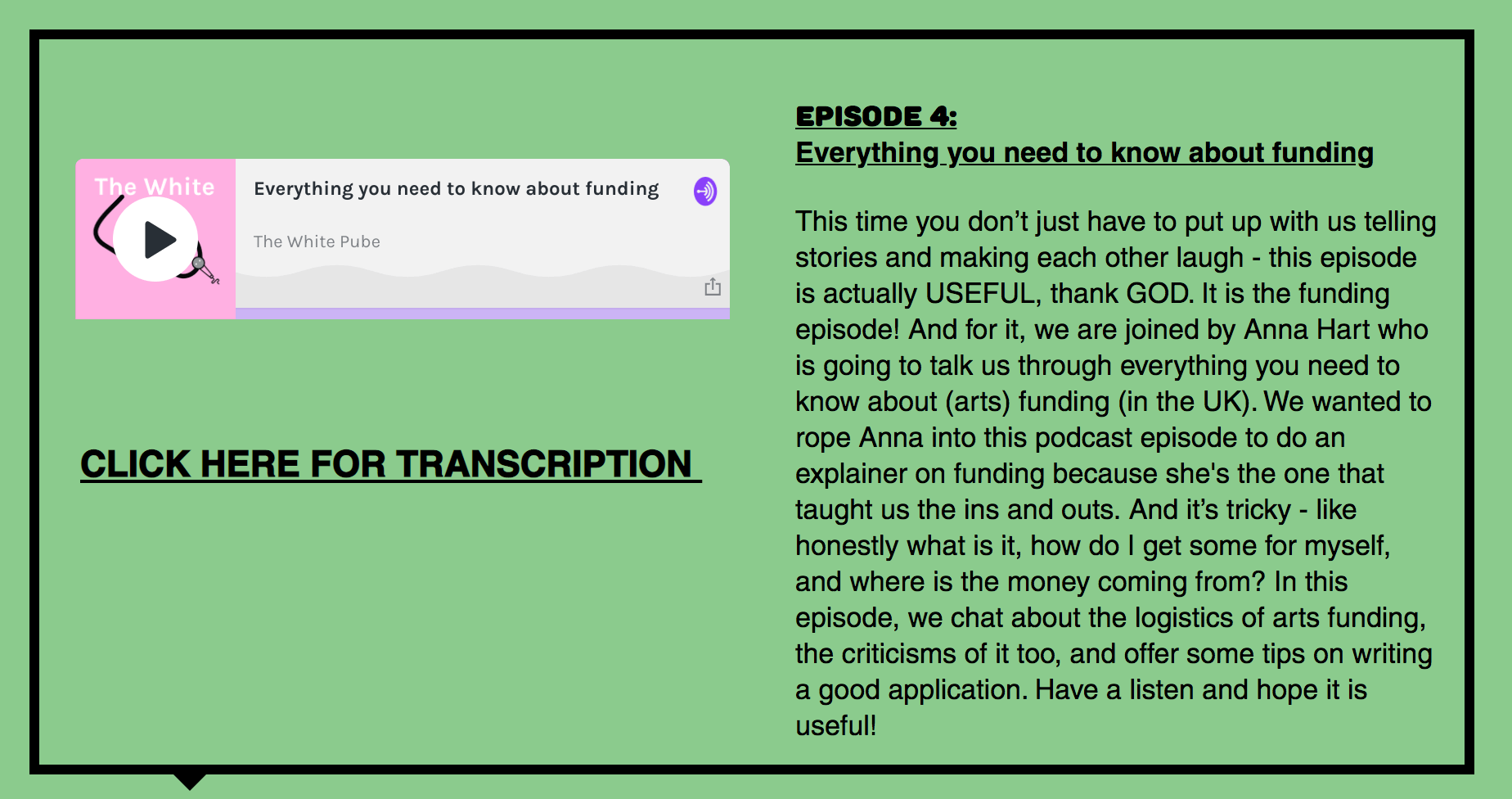
A few screenshots from The White Pube’s website

You guys are changing that in your own ways through the website. What was the inspiration behind starting The White Pube web residency? It’s such an amazing initiative. And the Writer’s grant as well – how and when was that launched?
The residency started in 2016. We were quite protective of the writing we did and knew that we wanted our writing to be quite insular, separate conversations. So we didn’t want to necessarily find any other writers to publish stuff with us. But we happened to look at an artist who did web residencies and we thought that’d be cool to do on TWP’s website on a monthly basis.
As we were still students, we couldn’t get funding for this, so it was unpaid the first year. And then the next year, we couldn’t apply for public funding, because the Arts Council said that we’ve proved that the project can be done without the funds. We wanted to invite anyone regardless of geography, which was again something the Art Council funding had special rules for. So for three years, it went unpaid. But last year, we did an advice column for Dazed and they paid us 200 pounds per column. We were able to pay the 2019 and 2018 residents 100 pounds, and then started backdating the payments. This year, we’ve got enough in our Patreon to pay the 2020 residents and 2017 residents.
With the residency, we do very little in terms of curation. The only curation I do is just figuring out who should do it when, based on the people who write to us. And they’re not always artists actually. In fact, I want people who have nothing to do with the creative world at all, like a postman or an accountant, to do our residency.
We don’t really tell residents what to do, we just ask them to keep it as simple as possible, because we’re not paying them that much. So any success, any goodness that comes out is entirely the resident’s and not ours. We just kind of hand over the keys.
For the Writers Grant, it was a bit more hands-on. We have an existing relationship with Creative Debuts, which is a young, emerging platform for artists. They have helped us find corporate funding. And we’ve been doing some ghostwriting for them on their Instagram. And they also run the Black Artists grant where they give out pots of funding to black artists every month with no strings attached. We take submissions on a rolling basis for this; it’s just kind of an email address that’s open where people can send us some work and contact details. We don’t really expect any reporting or evaluation, we just pick someone, anyone. We’re really pleased with the two recipients we’ve chosen so far. Both of them are incredible talents! I feel very lucky to have been able to give them 500 pounds.
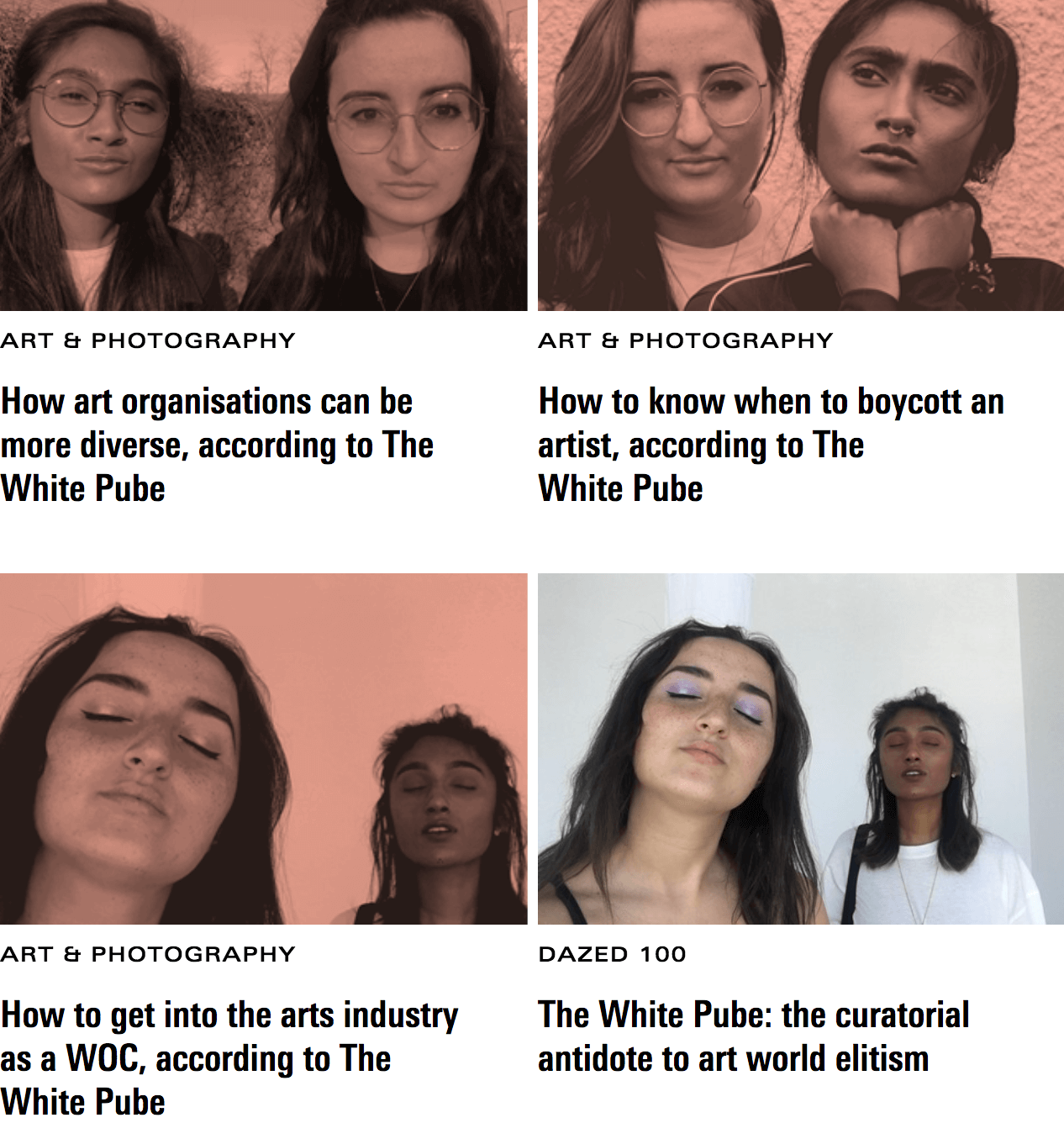
Screenshot courtesy dazeddigital.com
One of the coolest and most generous things you guys do is to publish the accounts – one of the reasons is to make the people who invite you for talks and stuff more accountable, but I am sure the accounts help and inspire other freelancers/creative platforms. Could you tell us about that? And has it inspired other spaces and institutions to become more transparent?
God, I really wish we had the impact that people think we have because, quite frankly, I’ve not seen any gallery publish their accounts.
But for us, it’s been really helpful and not just because we are politically talking about the money and economics of the art world which is super important. It helps people who are younger than us wanting to do the same thing, figure out where they stand in relation to these institutions, what they can expect, or what the general yardstick is. It’s helpful to see what other people have been paid for the same gig, even though it often differs.
It’s also been a really handy bargaining tool. I cannot stress enough the amount of times that we’ve been in an email conversation with an institution and been like, ‘Can you pay us both the same fee rather than expecting us to split it because funnily enough, we don’t split living costs.’ When I eat, Gab doesn’t shit. We’re not symbiotic entities and we need separate fees. And they ignore the request until we say ‘Well, just remember that we’re going to be publicly publishing our accounts’. And all of a sudden, they are ready to “fight for us to be paid the fee that we deserve.”
“Art can be the butt of the joke too, it’s not this precious special thing exempt from humour or irony – and bearing that in mind and practicing it when I go to exhibitions has helped me not see criticism as this life or death thing.” – You guys had said this in one of your Dazed advice columns. Is this something that will always be a part of TWP’s soul in some way?
It’s got to be. Our name is The White Pube!
I think Gab wrote that sentence. Art is kind of life and death because it is a living for so many people – how they make their money, put food on the table, put clothes on their kids’ backs – it’s important. But the way we think about the work of art itself, this life and death way, it’s such a stupid, peculiar way to spend your time on and be so emotionally invested in. We will always insist that life exists outside of these places. There are so many things you can choose to do with your weekend even if you’re in East London, where all these galleries are. So why have you chosen to go to this gallery? And if you have chosen to go to this gallery, how do you feel about it? Do you have to take it seriously? No, of course not. Life goes on and life is more important, and people are more important. And fundamentally, that is what art should speak to you. And if it doesn’t, then that’s quite funny. It’s fine. You’re not gonna hurt feelings. It’s a painting. I think it’s a fundamental point that we’ll always agree on.
Image credit for all photos (unless mentioned otherwise): Ollie Adegboye (ollieadegboye.com/ @misterollie).
